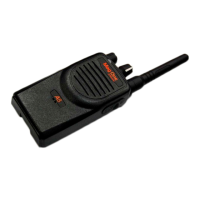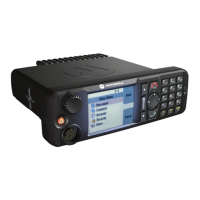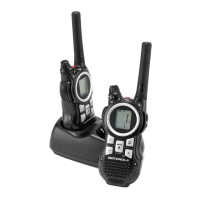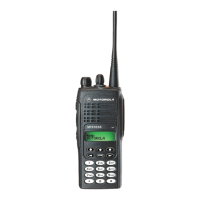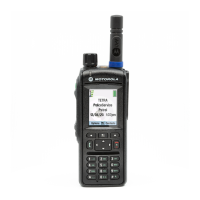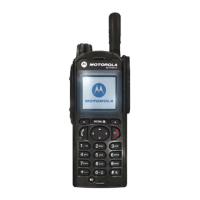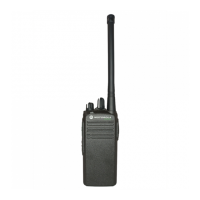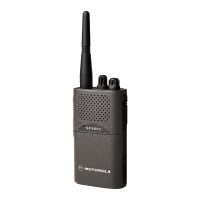G-1
GLOSSARY OF TERMS
Term Definition
Busy Channel If BCLO is activated, the radio will check for channel activity before transmit-
Lockout (BCLO) ting. If activity is detected, transmission is prohibited. For carrier squelch mode,
radio will not transmit, if it is receiving carrier. For coded squelch mode, it will
not transmit, if it is receiving carrier with different PL/DPL code.
Carrier An electromagnetic signal that is transmitted on a selected frequency for the
purpose of carrying voice or data transmissions along with it. Carrier can then
be received by all radios listening on that frequency.
CD Compact Disk.
Channel A single path separated by frequency or time divisions used for transmitting
and/or receiving voice and/or data.
Codeplug A solid-state chip inside a radio where the radio‟s personality data is stored.
CPS Acronym for Customer Programming Software. Licensed Motorola software
used to program two-way radios with a unique set of features.
Frequency (a) The location of the center of a channel of operation in the radio spectrum.
Measured in Megahertz (MHz).
(b) A computer speed. Measured in Megahertz (MHz).
Model Number The model number identifies the type of radio. This information is stored in the
radio‟s codeplug.
Normal Scan For Normal Scan, the radio assigns equal priority to all members in the Scan
List selected for the current channel. When the radio is scanning a Scan List
(Active Scan), all scan list members (including the Home Channel) will be allocated
equal time to be scanned. For example, if the Home Channel is H1, and
the Scan List Members are Nn, then the scanning sequence is: N1, N2, N3, ...,
H1, N1, N2, ..., etc.
PLL Phase-Locked Loop: a circuit in which an oscillator is kept in phase with a ref-
erence, usually after passing through a frequency divider.
Priority Scan For Priority Scan, the radio assigns the highest priority to the channel defined
in the CPS as Priority Channel. When the radio is scanning a Scan List (Active
Scan), 50% of the scans are targeted at the Priority Channel. For example, if
the Priority Channel is P1, and the non-priority Scan List Members are Nn, then
the scanning sequence is: P1, N1, P1, N2, P1, N3, P1, N4, P1, N5, etc.
Program The transfer of CPS information from the computer‟s temporary memory (RAM)
to the radio.
PTT Push-To-Talk: the switch located on the left side of the radio which, when
pressed, causes the radio to transmit.
RESET Reset line: an input to the microcontroller that restarts execution.
Reverse Burst / Causes a Tone Private Line (TPL) or Digital Private Line (DPL) code to be
Turn Off Code transmitted at the end of a transmission - once PTT is released, and while op-
erating on the current channel. This sub-audible tone causes the receiving ra-
dio to mute its speaker before loss of a carrier is detected. Muting the speaker
eliminates unwanted noise (squelch tail) during loss of carrier detection.
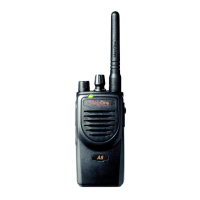
